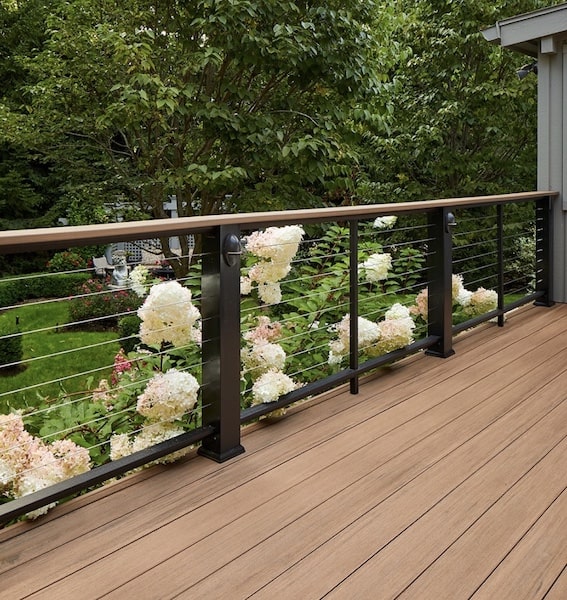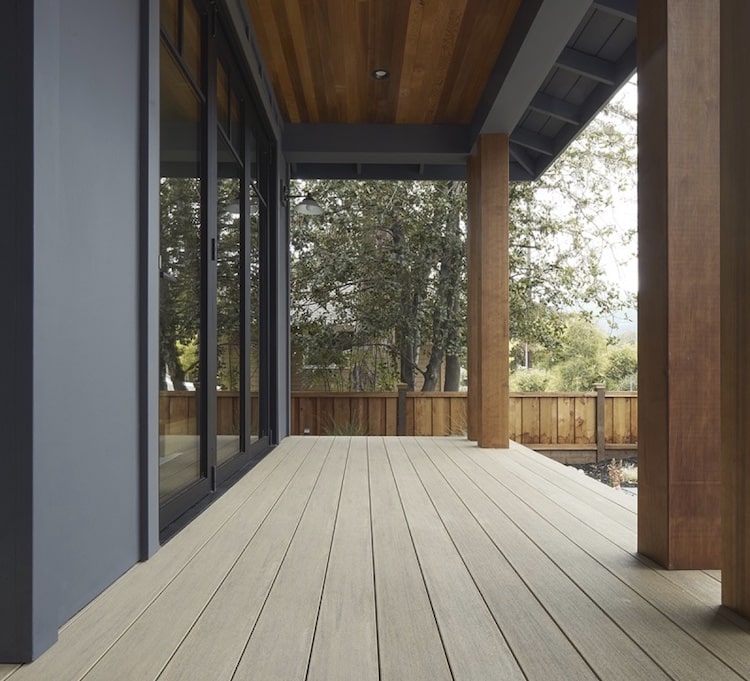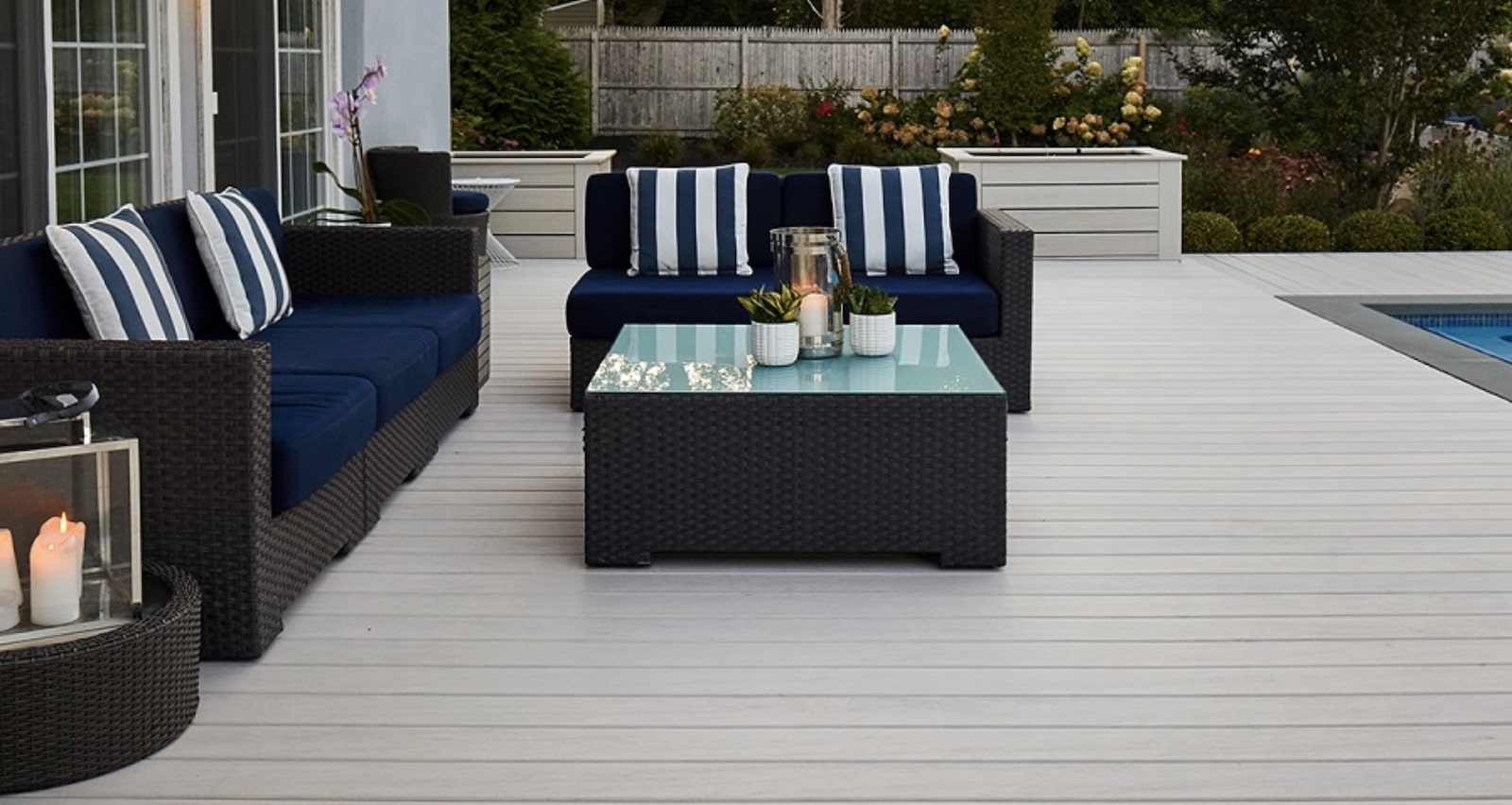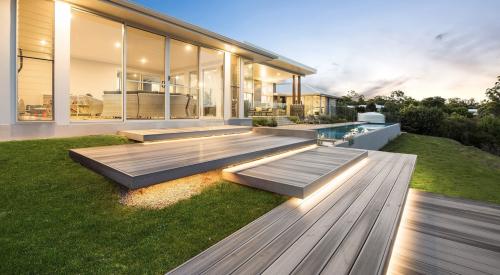Although homeowners love the look and feel of traditional wood decking, more and more of them have been choosing composites. The evidence for that trend isn't just anecdotal: a 2019 market study by Principia, a consulting firm serving the building products industry, found that composites already account for the majority of decking sold in the Northeast and are gaining in other parts of the U.S. as well. (1)
What's driving that growth? The answer is that more homeowners, contractors and dealers than ever are coming to understand the edge that composites have over wood decking. You could describe composites' growth as supported by a three-legged stool consisting of performance, aesthetic and cost advantages.
Enhanced Performance for Decks
Homeowners may not be familiar with all the ways in which composite decking's performance has improved, but these improvements make it more appealing than ever. As an example, look at the technological improvements TimberTech AZEK has made in recent years.
Improved moisture resistance. Because these products use no organic material, they don't rot and they don't support mold or mildew growth.
Longer warranties. TimberTech AZEK's product line comes with a 50-year fade/stain warranty and lifetime limited product warranty (vs. 25-year warranties from leading competitors).
Cooler, less slippery surfaces. Compared to competitors’ composites, TimberTech AZEK decking stays up to 30 degrees cooler, a huge advantage on hot summer days. Their surfaces are also up to 40% more slip-resistant than other products.

Environmental friendliness. More and more products of all types are being manufactured with recycled or recyclable materials these days. TimberTech AZEK capped polymer boards are made with up to 54% recycled material while the brand’s capped composite decking products are made with up to 80% recycled material. Across all its product lines, TimberTech has helped homeowners save one million trees by switching from wood decking to composites.
Enhanced fire resistance. TimberTech AZEK's Vintage Collection offers a Class A Flame Spread Index. After one of the worst Western wildfire seasons ever, this will be of particular interest to homeowners in that part of the country.
Looks Like Wood, But Better
A product's performance also includes its ability to hold its looks over time. Composites are gaining on that front as well.
It's no surprise that aesthetics is a huge issue for homeowners and that many of them opt for wood decking because they love the look and feel of real wood. We all do. But what a lot of homeowners don't consider is that even the best-maintained wood deck will lose its luster over time, aging about as well as white grout on a kitchen counter.
By contrast, high-quality composites stay attractive for many years. In fact these products are to exterior decks what quartz counters are to kitchens—manufactured surfaces that closely mimic the natural item and retain their beauty far longer.
Of course many people are as mesmerized by short-term aesthetics as they are by short-term costs, and will often choose a decking product based strictly on how it looks in the showroom. Composite manufacturers understand this, and have devoted much of their research and development (R&D) efforts into making their products look more like real wood. As a result, these products have come a long way.
Professionals and homeowners alike remember the first-generation composites. They quickly faded in the sun, stained and scratched easily, and were susceptible to mold growth. That left a lot of customers with a bad aftertaste.
Manufacturers solved these problems with the introduction of protective capping technology, or capstocks. The capstock is the outermost surface layer that is bonded to the underlying core of the deck board. It features the color and design of real wood decking. It also provides an additional layer of protection for the core, offering long-term durability by resisting stains, scratches and UV-induced fading.
However early capstocks had aesthetic issues. They included exaggerated, artificial wood-grain patterns, noticeable pattern repeats, unnatural colors and a higher gloss level than real wood. Basically, they looked like plastic.
That's no longer the case. Manufacturers' R&D efforts have resulted in capstocks that look much more realistic, and stay that way over time.

For instance, TimberTech's capstocks come in a variety of wood grain patterns that range from traditional to hand-scraped to wire-brushed and other designs. Its latest color options are decidedly multi-tonal: the company can mix stain colors in a variety of patterns and levels of intensity. Some of its deck boards have been engineered to resemble exotic tropical hardwoods and are virtually indistinguishable from the real thing.
And aesthetics continue to get better. For future products, manufacturers are looking for inspiration to hardwood flooring, furniture, cabinetry and other wood elements. They're also working on expanding the available grain patterns. "Rather than just a traditional, open flat-sawn wood-grain pattern, we are seeing demand for rift and quarter-sawn grain patterns, a trend toward more rustic, reclaimed, time-worn designs and more European-influenced designs like wire-brushed, low-gloss visuals and wide and narrow-widths," says Patrick Barnds, Senior Vice President of Product Management at The AZEK Company, TimberTech’s parent company.
While these enhancements will be a challenge to deliver, most industry pros are confident that they can do so. "We know that the possibilities will continue to evolve along with homeowners’ developing tastes and preferences," says Barnds.
Long-Term Savings
While these enhancements are winning over an increasing number of homeowners, many of them still base their final products decisions on cost. That's understandable, but it also works in composites' favor.
The fact that prices for wood products of all types, including decking, are a lot higher than they were even a year ago is highlighting composites' short and long-term cost advantages. Today, the initial cost of a high-quality decking like TimberTech AZEK will be only slightly more than pressure-treated, and about equal to a premium hardwood like ipe. However, the real advantage is composites' far lower lifetime cost.
That's because composite decking has far lower maintenance requirements. The typical composite needs no more than an occasional cleaning with a garden hose and a broom.
By contrast, the annual maintenance demanded by a wood deck could include pressure-washing, sanding and staining. Over a ten-year period, pressure treated costs three times more to maintain than composite decking and hardwood four times more. (2)
The bottom line is that better performance, better looks and lower cost will ensure that composite decking's market share keeps growing. And with manufacturers committed to improving the product even further, its best days are still ahead.








